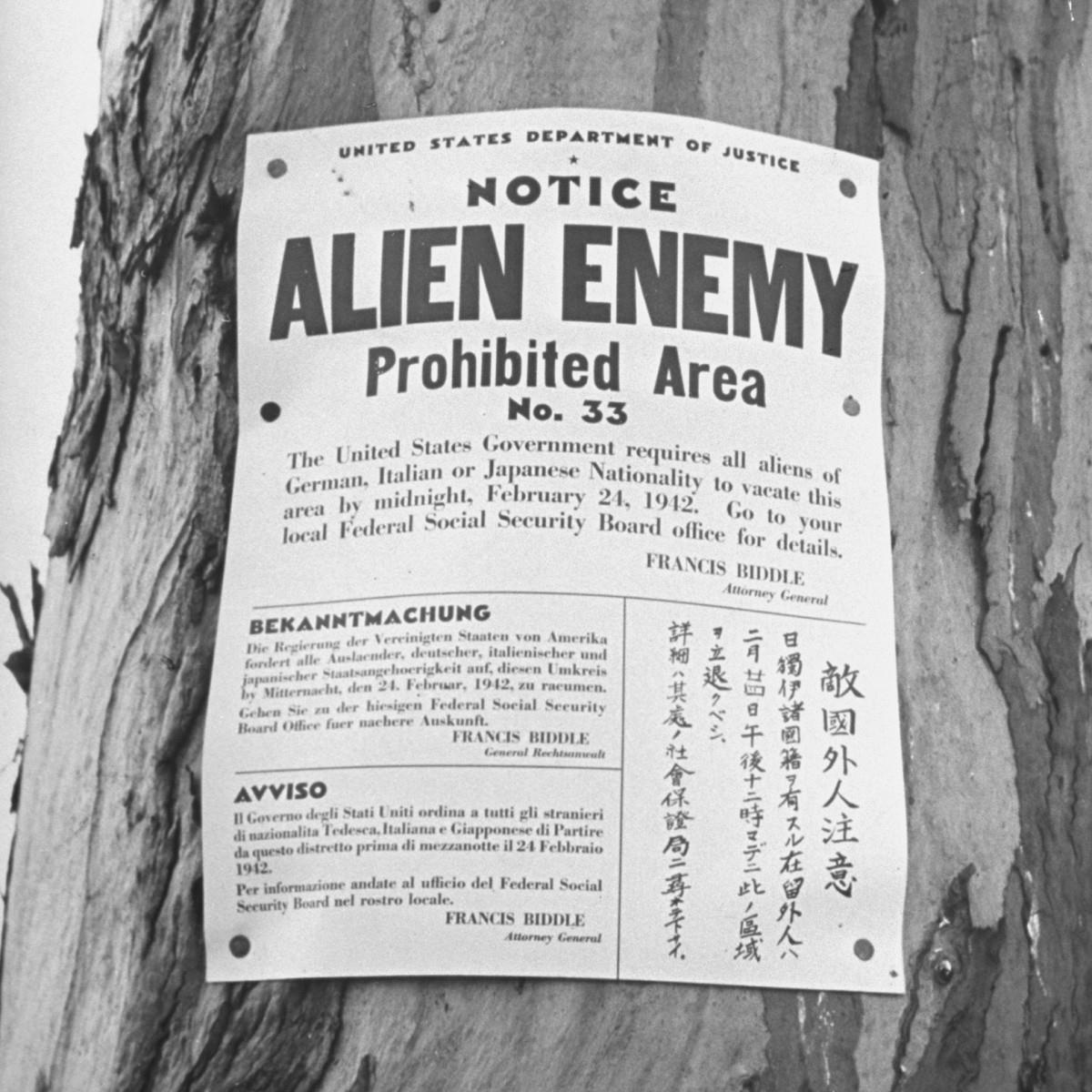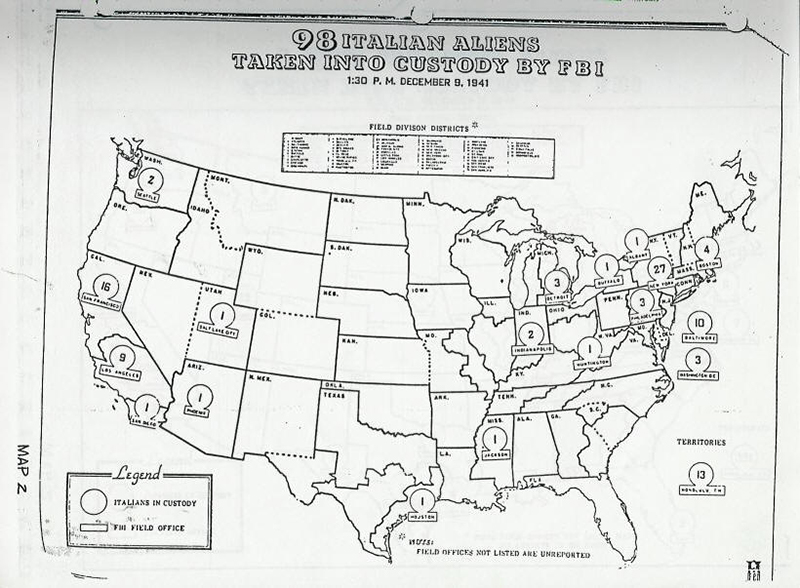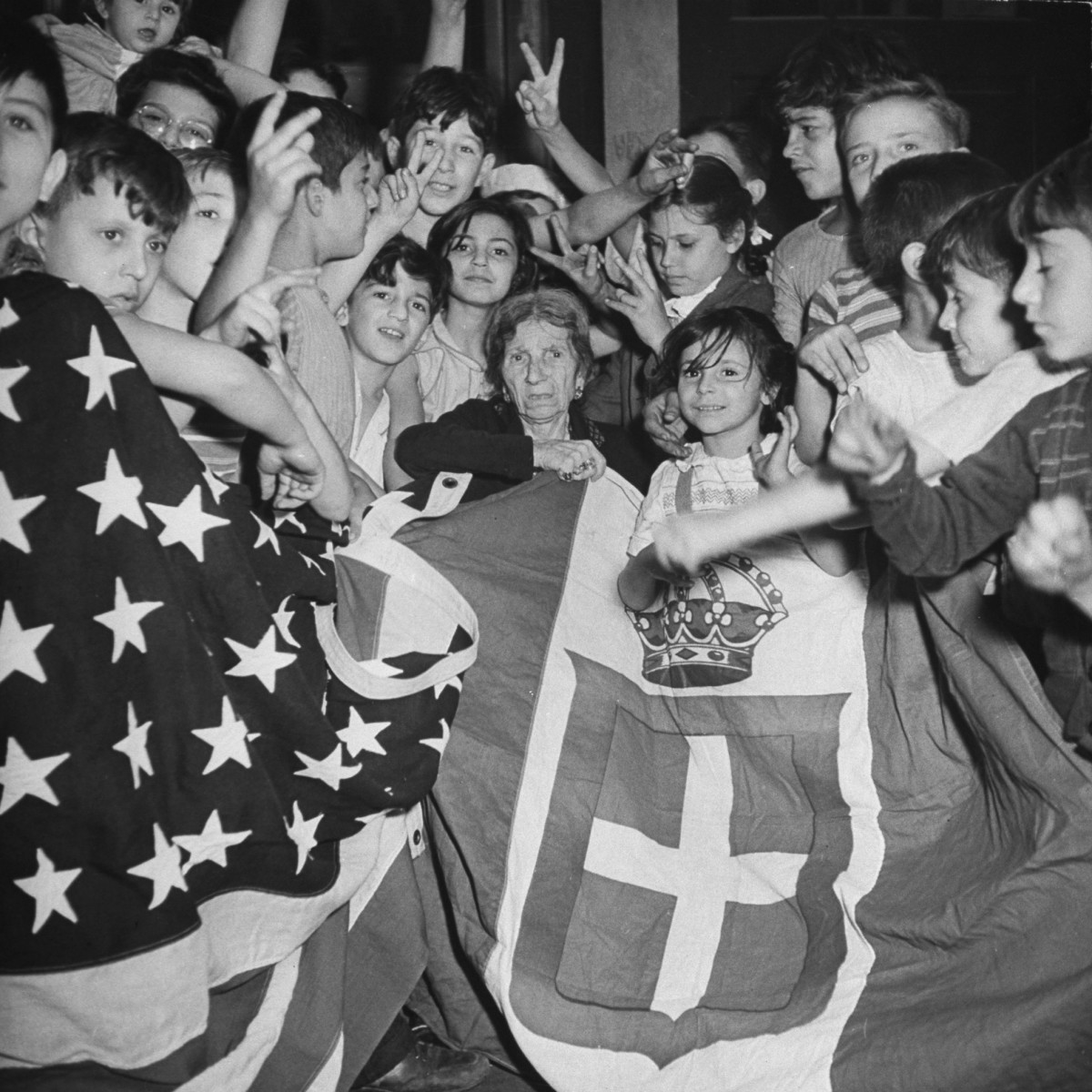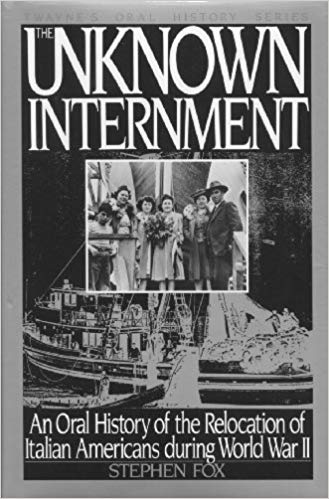Many Italians although living and working in the United States had not yet been naturalized. When Italy became aligned with Hitler they immediately came under suspicion although there was no indication of any partisanship with their newly aligned homeland. Their loyalties nonetheless became a matter of concern. Roosevelt asked J. Edgar Hoover, Director of the Federal Bureau of Investigation assembled a list of names of aliens from Germany, Japan and Italy without regard for anything else but their nationality.
Between 1935 and 1939 Congress passed four neutrality acts which began the process of the internments of Italians, as well as Japanese and Germans to follow. Neutrality Acts
In 1939 and 1940 prior to any participation of the United States in the European conflict, the Roosevelt administration and Congress passed and invoked legislation which significantly removed the rights of Americans of Italian extraction as well as alien Italians. On June 28, 1940, Congress passed the Alien Registration Act of 1940 http://www.italianhistorical.org/smithactalienregistrationactof1940origiinalandtransferred.pdf
otherwise known as the Smith Act acknowledging its chief architect, Howard W. Smith, a representative from Virginia between 1931 and 1967. Within 4 months 4 million aliens registered.
The Dangerous Cargo Act was also passed in 1940:
“Port Security responsibilities are undertaken again for the first time since World War I when President Franklin Roosevelt invoked the Espionage Act of 1917. The Coast Guard was to govern anchorage and movement of all vessels in U.S. waters and to protect vessels, harbors, and inland or coastal waterways of the U.S. The Dangerous Cargo Act gave the Coast Guard jurisdiction over ships with high explosives and dangerous cargoes.
The Coast Guard's World War II Crucible
Under the authority of these acts, the US Navy and Coast Guard moved against Italian ships: On March 30, 1941, 28 Italian Ships were confiscated by Coast Guard accusing the crews of sabotage and arresting them. In December 1941 at the Panama Canal, the Italian Luxury Liner Conte Biancamano was commandeered, converted to a troop ship and commissioned in the United States Navy as the USS Hermitage. 483 Italian crewmen are taken into custody. With terribly crowded conditions they are brought to Ellis Island where they were essentially incarcerated with virtually no amenities and stripped of any rights. After enduring these harsh conditions they are transferred by trains with bared small windows to Missoula Montana. In May, after three days in the cramped dark train cars not unlike the mode of transportation provided in Germany for the transportation of the Jews to the death camps, they arrived in at Fort Missoula, Montana. Although not charged with any crime they were indefinitely detained.
On December 7, 1941, conditions became even more severe for Italians. The attack on the Japanese at Pearl Harbor elevated some 600,000 Italian American to be considered enemy aliens.
Acting on the lists developed a couple of years before, thousands arrested within 24 hours of the attack. For the most part, it was the men, the head of the household and support of their families who were arrested. Their assets frozen, sources of support were taken from those who remained inflicting terrible hardship on tens of thousands of innocent remaining family members. On December 9, 1941, the FBI took 98 Italian Aliens into custody.
Those who were arrested were transported to holding facilities at Fort Lincoln, North Dakota, Crystal City, Texas as well as Missoula Montana McAlister OK. Every immigrant not naturalized was considered a threat. This is a map of all known Internment Camps in WWII. Oppressive restrictions were imposed on those who were not incarcerated. Severe travel restrictions and the confiscation of such items as radios and flashlights completed the insult inflicted on these good people, many of whom who had served in the American military for over 20 years. Severe travel restrictions were imposed. They were required to turn over items considered potential threats – weapons, radios, and flashlights (for potential signaling).
On February 19, 1942, Roosevelt signed Executive Order 9066 authorizing the military to limit movements or arrest suspected alien residents. Although applying primarily to Japanese, it also involved the arrest of 3,200 Italians resulting in the incarceration of 300.
In California the effect is devastating. Lt Gen John L. DeWitt, head of Western Defense Command, sought to intern the entire “enemy” population. He imposed a curfew: No travel beyond 5 miles and no night travel effectively eliminating the possibility for many to retain their employment. All were also restricted from the coast and from their boats which were confiscated. Among the effects decimated the fishing industry along the California coast.
DeWitt pursued actions that effectively destroyed the economic lives of all Italians in the West. Joe DiMaggio, the very popular baseball player of the New York Yankees enlisted in the army in 1942; meanwhile, his father who was a fisherman was prohibited from his livelihood. Fisherman’s Wharf was restricted to Italians where the DiMaggios were prevented from overseeing their own restaurant.
Businesses in “restricted zone” were closed. People lost their jobs and could not find employment because of their enemy alien status. The evacuation of 10,000 Italian Americans in California occurred forcibly and swiftly. There were several suicides.
Italian could not believe that the country they loved so much would do this to them.
Spring and summer of 1942 was the nadir of the anti-Italian prejudice. Many business owners used the occasion to eliminate the businesses of their Italian competition.
In one of the most ludicrous acts of the time, the popular opera singer, Ezio Pinza was arrested on March 12, 1942 – He was removed from his home which was then searched and he was briefly imprisoned on Ellis Island.
In May 1942 California Assemblyman, Jack Tenny targeted Italians for conspiratorial activities. Angelo Rossi mayor of San Francisco was accused of giving a Fascist salute. At that point, the insanity of these activities was beginning to become apparent. New York Mayor Fiorello LaGuardia demanded an end to this process. Attorney General Francis Biddle in a true act of courage opposed both the FBI and the Military on the extreme measures that were being taken, measures that not only were clearly unnecessary but likely illegal.
On October 12, Columbus Day, 1942 Biddle announced at Carnegie Hall that Italians would no longer be classified as enemies. The persecution ended as suddenly as it began. However, the 300 or so who were incarcerated remained so until the end of the war in Europe in 1945.
Knowledge of the persecution and internment suffered by the Italians during WWII has all but been forgotten. Much of this is because the Italians themselves wanted to quickly put this very difficult experience behind them. They loved the United States and only wanted to continue to achieve the dreams that they had come to this country to pursue.
It became known within Italian Circles as The Secret History. It was well chronicled in the 2001 book entitled La Storia Segreta.
However, in 1999, under the strong leadership of Congressman Eliot Engel along with Congressman Rick Lazio, HR 2442, War Time Violation of Italian Civil Liberty Act was passed. On November 7, 2000, Congress passed Public Law 106-451
For more information refer to:
History Channel - Why America Targeted Italian-Americans During World War II
BOOKS:
Una Storia Segreta : The Secret History of Italian American Evacuation and Internment During World War II, edited by Lawrence Distasi, Heyday Books, 2001.
La Storia: Five Centuries of the Italian American Experience, by Jerre Mangione, Harper Perennial 1993
UnCivil Liberties: Italian Americans Under Siege during World War II, by Stephen Fox, Universal Publishers; Revised edition 2000.






